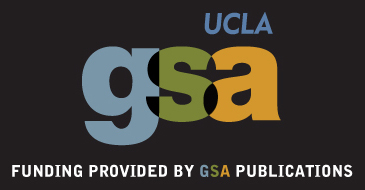Introduction
Welcome to Volume 22, issue 1 of Ethnomusicology Review! This issue features an invited essay along with three peer-reviewed articles that cover a wide range of topics, geographical areas, methodological and theoretical approaches. As it seems to be a characteristic of ethnomusicology at large, this variety, even if it has become an object of critical inquiry itself (Rice, 1987, 2007; Laborde, 1997), has allowed the discipline, by grounding itself in reference to the context of study, to not take “music” for granted. It is in this perspective that we’d like to present this volume, and the variety of its contributions.
In his invited essay, Jim Sykes asks what ramifications of the Anthropocece, understood as a socio-ecological crisis, hold for the field of music studies and the politics of its internal disciplinary divisions. Drawing upon scholars who assert that the Anthropocene demands not only concern about our planet’s future but also critical attention towards the particular, historically situated ontological commitments that engendered this crisis, Sykes argues that music studies both depends on and reproduces a normative model of the world in which music itself occupies an unproblematized metaphysical status—one that, furthermore, occludes the possibility of “reframe[ing] music history as a tale about the maintenance of the Earth system” (14, this issue) urgently necessary as anthropogenic climate change threatens the continuation of life as usual. By taking seriously the material and discursive aspects of musical practice often encountered ethnographically, yet either explained away by “the worldview embedded in our disciplinary divisions or . . . squeezed through an ontological funnel to be made legible within them” (3, this issue), Sykes shows how attention to such ontological incommensurability not only allows scholars to do better by their interlocutors, but further offers alternatives to reproducing the toxic metaphysics at the heart of the Anthropocene.
Grounded in the methodological reassessment of the notion of “performance,” Anthony Grégoire reflects on what a musical performance entails. His article offers to investigate the non-musical dimension at stake in musical performances through his own fieldwork among the Sereer-noon of Senegal. By first contextualizing the Sereer-noon’s history and cultural conceptions, he intends to give special attention to community-building through choral-singing. He links those two activities through what he calls a “performancial community,” an idea that community builds and sustains itself through the continuous performance of music over time. In this way, the aim of the article isn’t so much about asking “What a ‘performance’ is?” but rather “what it means to perform and how?” (36, this issue).
In their contribution, Bruno Deschênes and Nick Bellando deal with what they call “tone-colour” in Japanese music through the study of the shakuhachi flute and its playing. Further, the article offers a history of shakuhachi playing by contextualizing it in Japanese music and culture at large. By grounding their understanding of shakuhachi playing in its religious context of emergence, they identify its aesthetic dimension as linked to the player’s tentative to “express truth.” If they focus on tone-colour in Japanese music, they’re careful not to oppose European and Japanese musical sound traditions in binary terms, where tone-color would belong to one side, and pitch and melody to the other. As it develops a particular case on how the recognition of sounds as musical depends on socio-cultural contexts, the article questions what the aesthetic value of music can mean, and critiques determined notions of beauty associated to certain sounds.
George Murer’s article immerses the reader in the irreducible heterogeneity of music-making in the Baloch communities of the Makran Gulf. With exemplary ethnographic detail, he simultaneously traces the myriad regional influences on Balochi music and the changing meanings it holds for its performers and audiences. But he manages to do so without collapsing his object of research into a single model: “the contemporary popular music produced and consumed by Muscat's Baloch community,” he argues, “refracts into multiple strains inscribed with specific geocultural orientations. No single current of cultural performance can comprehensively encapsulate this diverse community” (61, this volume).
Continuing our commitment to publish a diversity of voices, we are pleased that this issue features essays from authors representing a number of distinct career paths and points within them. In addition to a piece by an Associate Professor of Music (Sykes), we include articles both by graduate students in ethnomusicology (Grégoire and Murer) and scholar-performers (Deschênes and Bellando). Our Sounding Board, furthermore, acts as an online venue for ethnomusicological expression beyond the requirements mandated by the blind review process; here we also feature the many posts that have appeared since the publication of our previous volume. You can find book reviews, editorial news, and various essay sections. We hope you find our offerings as inspiring and thought-provoking as we do—our online format, furthermore, makes it possible to provide public comments on individual articles. For more substantial insights, whether related to this volume’s contents or something wholly different, please keep an eye out this coming summer for isse 2 of our current volume, and keep in mind that our next call for papers has already been announced, with a deadline of March 23rd. In the meantime, enjoy!
References
Laborde, Denis. 1997. De Jean-Sébastien Bach à Glenn Gould. Magie du son et spectacle de la passion. Paris, L’Harmattan.
Rice, Timothy. 1987. “Toward the Remodeling of Ethnomusicology.” Ethnomusicology 31(3): 469–488.
______. 2007. “Reflections on Music and Identity in Ethnomusicology.” Muzikologija [Musicology] (Belgrade) 7: 17–38.



